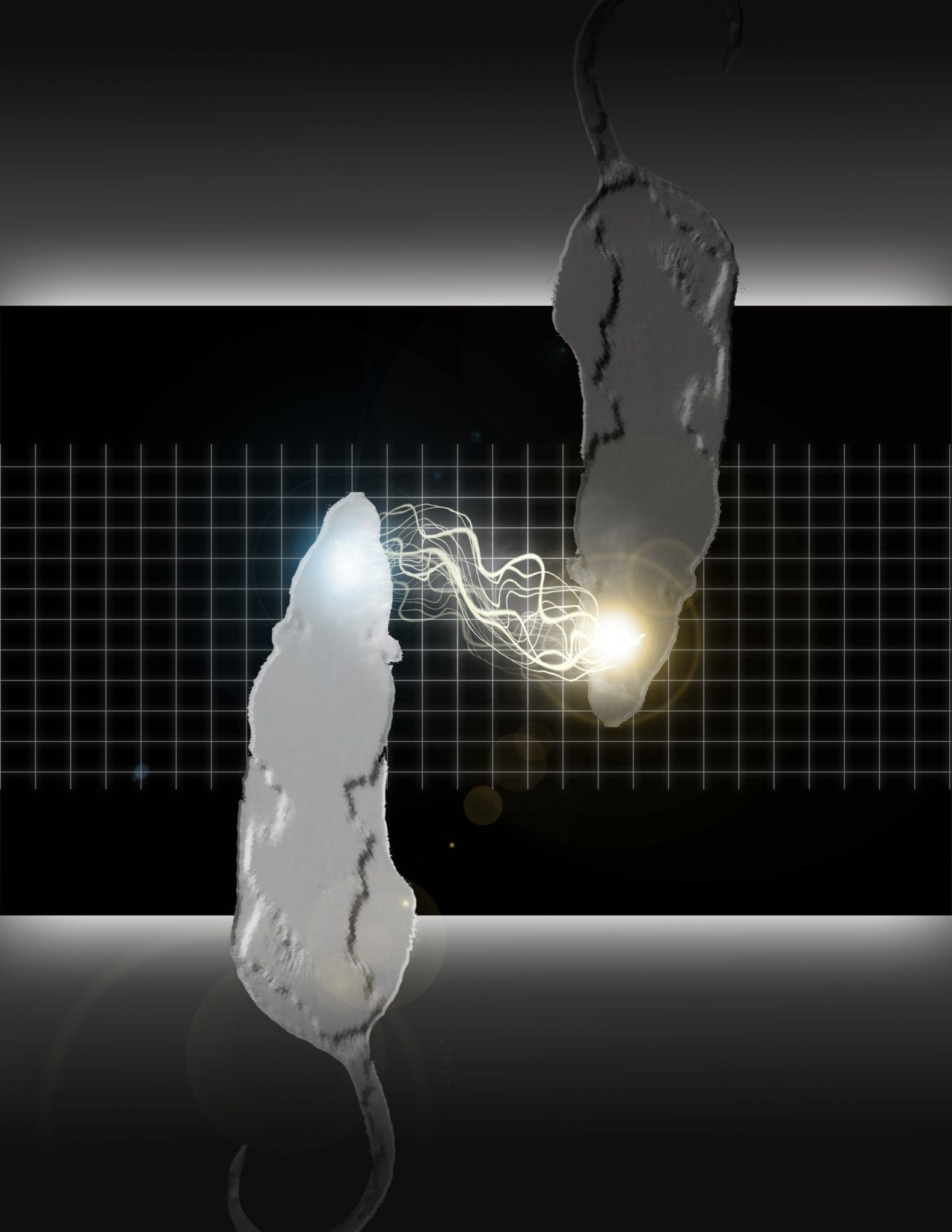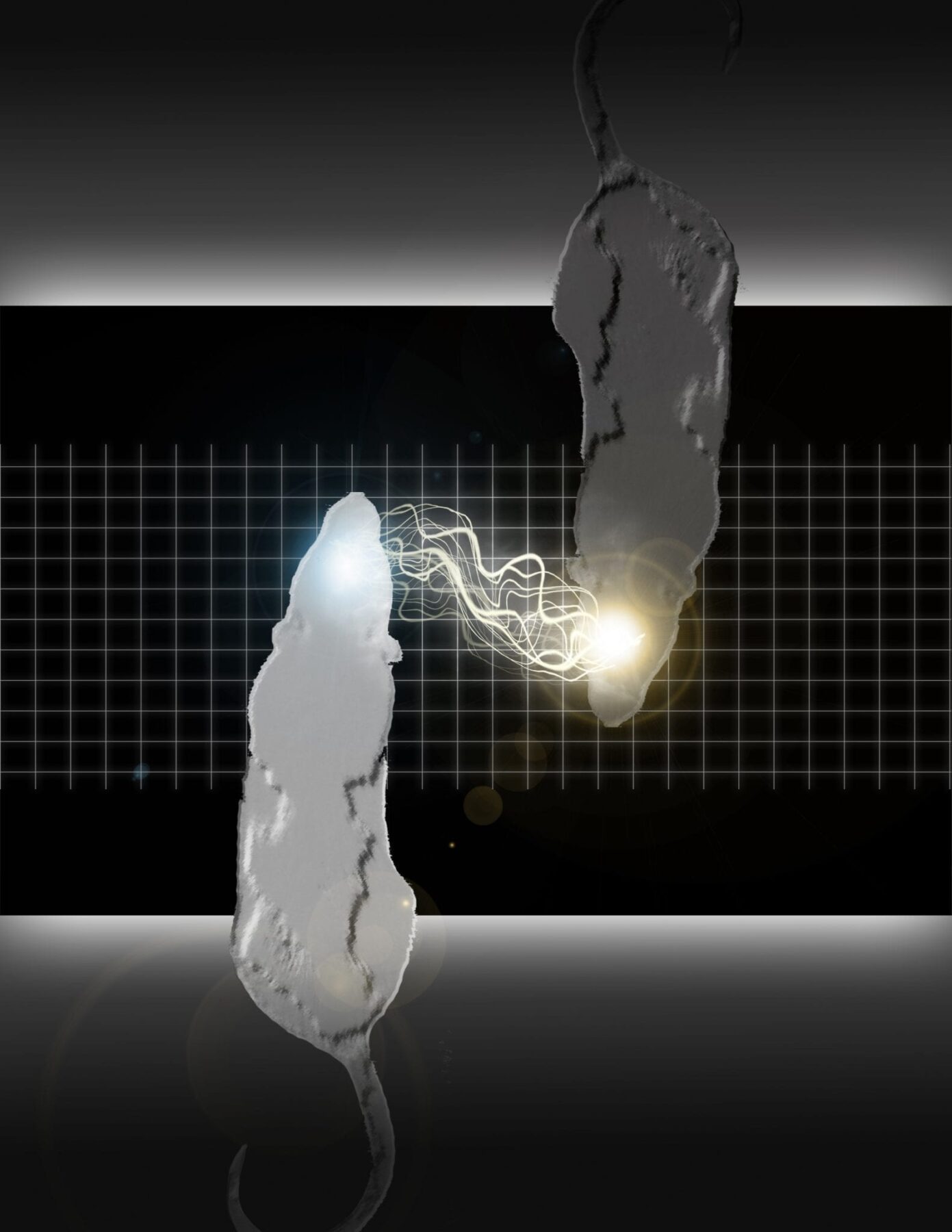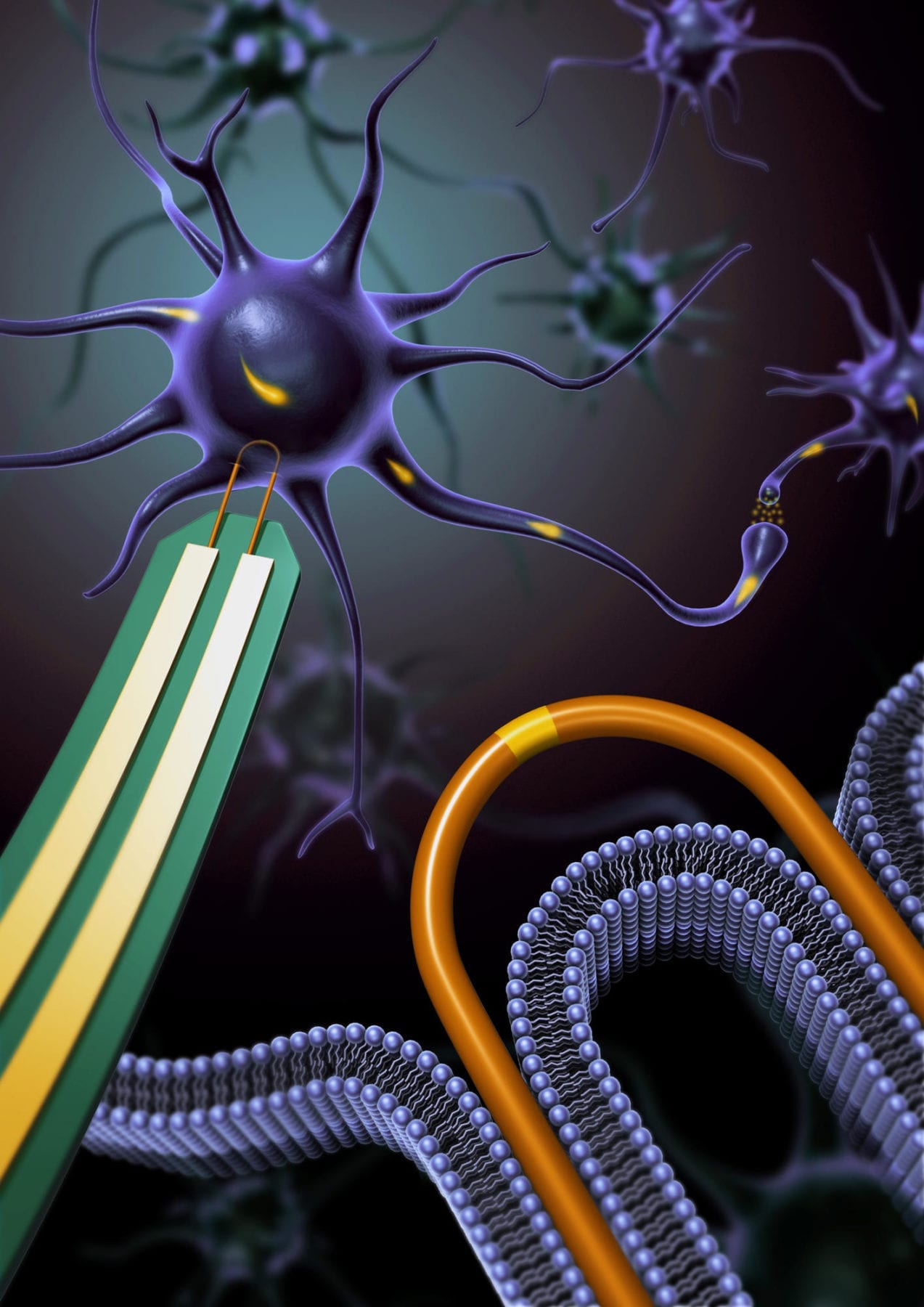
Researchers have electronically linked the brains of pairs of rats for the first time, enabling them to communicate directly to solve simple behavioral puzzles.
A further test of this work successfully linked the brains of two animals thousands of miles apart—one in Durham, N.C., and one in Natal, Brazil.
The results of these projects suggest the future potential for linking multiple brains to form what the research team is calling an “organic computer,” which could allow sharing of motor and sensory information among groups of animals. The study was published Feb. 28, 2013, in the journal Scientific Reports.
“Our previous studies with brain-machine interfaces had convinced us that the rat brain was much more plastic than we had previously thought,” said Miguel Nicolelis, M.D., PhD, lead author of the publication and professor of neurobiology at Duke University School of Medicine. “In those experiments, the rat brain was able to adapt easily to accept input from devices outside the body and even learn how to process invisible infrared light generated by an artificial sensor. So, the question we asked was, ‘if the brain could assimilate signals from artificial sensors, could it also assimilate information input from sensors from a different body?’”
To test this hypothesis, the researchers first trained pairs of rats to solve a simple problem: to press the correct lever when an indicator light above the lever switched on, which rewarded the rats with a sip of water. They next connected the two animals’ brains via arrays of microelectrodes inserted into the area of the cortex that processes motor information.
One of the two rodents was designated as the “encoder” animal. This animal received a visual cue that showed it which lever to press in exchange for a water reward. Once this “encoder” rat pressed the right lever, a sample of its brain activity that coded its behavioral decision was translated into a pattern of electrical stimulation that was delivered directly into the brain of the second rat, known as the “decoder” animal.
The decoder rat had the same types of levers in its chamber, but it did not receive any visual cue indicating which lever it should press to obtain a reward. Therefore, to press the correct lever and receive the reward it craved, the decoder rat would have to rely on the cue transmitted from the encoder via the brain-to-brain interface.
The researchers then conducted trials to determine how well the decoder animal could decipher the brain input from the encoder rat to choose the correct lever. The decoder rat ultimately achieved a maximum success rate of about 70 percent, only slightly below the possible maximum success rate of 78 percent that the researchers had theorized was achievable based on success rates of sending signals directly to the decoder rat’s brain.
Importantly, the communication provided by this brain-to-brain interface was two-way. For instance, the encoder rat did not receive a full reward if the decoder rat made a wrong choice. The result of this peculiar contingency, said Nicolelis, led to the establishment of a “behavioral collaboration” between the pair of rats.
“We saw that when the decoder rat committed an error, the encoder basically changed both its brain function and behavior to make it easier for its partner to get it right,” Nicolelis said. “The encoder improved the signal-to-noise ratio of its brain activity that represented the decision, so the signal became cleaner and easier to detect. And it made a quicker, cleaner decision to choose the correct lever to press. Invariably, when the encoder made those adaptations, the decoder got the right decision more often, so they both got a better reward.”
The Latest Bing News on:
Brain-to-brain interface
- China Shows Off Monkey With Brain Chip Allowing It to Control Robotic Armon April 27, 2024 at 5:00 am
A Chinese company has announced that they have successfully developed a brain chip and implanted it into a monkey who can now remotely control a robot arm with the device, state-run news media outfit ...
- China's homegrown brain-machine interface system unveiled at Zhongguancun Forumon April 25, 2024 at 11:45 pm
This photo shows the NeuCyber Array BMI System, a self-developed brain-machine interface (BMI) system from China, unveiled at the opening ceremony of the 2024 Zhongguancun Forum in Beijing, capital of ...
- Brain Computer Interface Market Deciphering Consumer Decision-Making the Role of Ethnography Techniqueson April 25, 2024 at 3:27 pm
Request To Download Free Sample of This Strategic Report @- Brain Computer Interface Market is valued approximately at USD $ billion in 2019 and is anticipated to grow with a healthy growth rate of ...
- New Products Collect Data From Your Brain. Where Does It Go?on April 25, 2024 at 2:43 pm
An array of new products monitors users’ brain waves using caps or headbands. That neural data has few privacy protections.
- China develops Neuralink rival for brain computer interface techon April 25, 2024 at 8:14 am
C hinese company Beijing Xinzhida Neurotechnology unveiled a brain computer interface (BCI) implant to rival Elon Musk's Neuralink at the 2024 Zhongguancun Forum (ZGC Forum).
- China Creates 'Neucyber,' Its Version of a Neuralink Brain Chipon April 25, 2024 at 5:58 am
China has reportedly developed a brain-computer interface chip called Neucyber that allows a monkey to control a robotic arm with only its thoughts.
- Colorado enacts groundbreaking brain data privacy lawon April 24, 2024 at 6:15 pm
Colorado became the first state in the nation to enact a law protecting neural data, emphasizing the growing intersection of technology and human biology while ensuring privacy in the expanding field ...
- WVU RNI takes part in groundbreaking research on brain-computer interface device for people with neurological disabilitieson April 20, 2024 at 4:20 pm
Researchers at WVU’s Rockefeller Neuroscience Institute are part of a team exploring cutting-edge technology to help people with neurological injuries and disabilities function and communicate. ...
- Brain-computer interface research reaches new frontierson April 19, 2024 at 7:02 am
Brain-computer interfaces may seem like a science fiction concept, but multiple studies are working to make this technology a reality.
- MIT Technology Reviewon April 19, 2024 at 3:00 am
In the world of brain-computer interfaces, it can seem as if one company sucks up all the oxygen in the room. Last month, Neuralink posted a video to X showing the first human subject to receive its ...
The Latest Google Headlines on:
Brain-to-brain interface
[google_news title=”” keyword=”Brain-to-brain interface” num_posts=”10″ blurb_length=”0″ show_thumb=”left”] [/vc_column_text]The Latest Bing News on:
Brain-machine interfaces
- China’s drive for tech progress stifled by ‘title-driven’ research approachon April 27, 2024 at 11:00 am
China is demanding more and better research to unearth the technology of tomorrow – but a research culture based around titles and participation in certain programmes is limiting the potential of its ...
- China Shows Off Monkey With Brain Chip Allowing It to Control Robotic Armon April 27, 2024 at 5:00 am
A Chinese company has announced that they have successfully developed a brain chip and implanted it into a monkey who can now remotely control a robot arm with the device, state-run news media outfit ...
- China eyes advancing brain-machine interface technology at 2024 ZGC Forumon April 26, 2024 at 4:02 am
Officials, scholars, and business representatives agreed to further promote the development of the brain-machine interface (BMI) technology and fully tap into the broad opportunities of frontier ...
- China's homegrown brain-machine interface system unveiled at Zhongguancun Forumon April 25, 2024 at 11:45 pm
This photo shows the NeuCyber Array BMI System, a self-developed brain-machine interface (BMI) system from China, unveiled at the opening ceremony of the 2024 Zhongguancun Forum in Beijing, capital of ...
- Hybrid brain lets one species' neurons help out another'son April 25, 2024 at 9:53 pm
Adding rat stem cells to a mouse embryo resulted in a ‘hybrid brain’ in which the rat cells stepped in to restore function when the mouse’s sense of smell was removed, new research has shown. It’s the ...
- Brain Computer Interface Market Deciphering Consumer Decision-Making the Role of Ethnography Techniqueson April 25, 2024 at 3:27 pm
Request To Download Free Sample of This Strategic Report @- Brain Computer Interface Market is valued approximately at USD $ billion in 2019 and is anticipated to grow with a healthy growth rate of ...
- Is Telepathy Possible? Perhaps, Due To New Technologyon April 24, 2024 at 11:00 am
Telepathy is generally considered pure science fiction; fun, but never something that will actually happen. But new research suggests we may be closer than we think.
- UNESCO chief appoints experts to develop global framework on ethics of neurotechnologyon April 23, 2024 at 4:18 am
As demonstrated by another UNESCO report published in 2023, the pace of innovation in this area accelerated when newly available Generative AI was integrated into neurotechnology research.
- Brain-computer interface research reaches new frontierson April 19, 2024 at 7:02 am
Brain-computer interfaces may seem like a science fiction concept, but multiple studies are working to make this technology a reality.
- OPINION: What is a brain-computer interface, and will you eventually have one?on April 15, 2024 at 1:57 pm
Once material for dystopian novels, the brain-computer interface world is now a possible reality that could be here sooner than expected. Companies have been making large strides with spearheads like ...
The Latest Google Headlines on:
Brain-machine interfaces
[google_news title=”” keyword=”brain-machine interfaces” num_posts=”10″ blurb_length=”0″ show_thumb=”left”]











